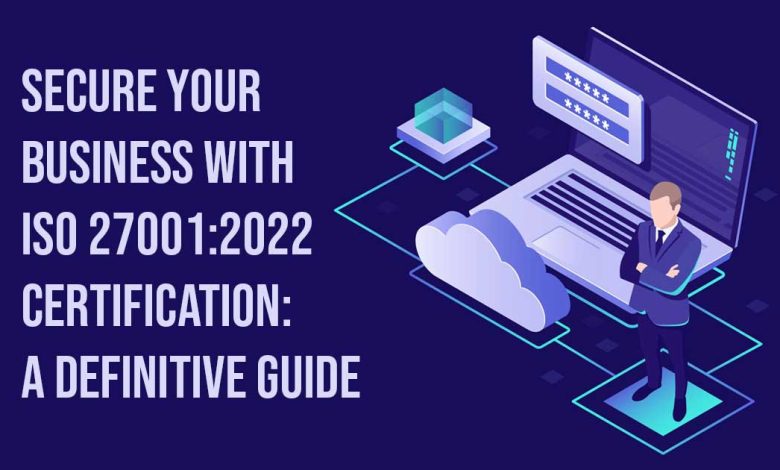Securing Trust and Enhancing Data Protection: A Guide to Achieving ISO 27001 Compliance Certification

ISO 27001 is an internationally recognized standard for information security management systems (ISMS), providing a systematic approach to managing and protecting company and customer information based on periodic risk assessments. In an era where data breaches and cybersecurity threats are increasingly common, achieving ISO 27001 compliance certification is a powerful way for organizations to demonstrate their commitment to safeguarding sensitive data.
Table of Contents
Understanding ISO 27001
ISO 27001 outlines a framework for establishing, implementing, maintaining, and continuously improving an ISMS. This framework is designed to help organizations manage the security of assets such as financial information, intellectual property, employee details, and information entrusted by third parties.
Key Components of ISO 27001
- Risk Management: Central to ISO 27001 is the systematic identification of information security risks and the implementation of controls to mitigate or manage risks.
- Security Controls: The standard includes a set of security control objectives and controls (Annex A), which organizations can tailor to their specific needs after conducting a risk assessment.
- Continuous Improvement: ISO 27001 emphasizes the importance of continuous improvement through regular audits and reviews of the ISMS.
Benefits of ISO 27001 Certification
- Enhanced Security: Implementing the standard helps protect an organization against risks such as data breaches, cyber-attacks, and theft.
- Competitive Advantage: Certification can give an organization a competitive edge, demonstrating to customers and partners that it takes information security seriously.
- Regulatory Compliance: It helps in complying with other regulations and legal requirements related to data protection and privacy.
- Improved Risk Management: Encourages a culture of risk management and continuous improvement within the organization.
- Trust and Credibility: Enhances the organization’s reputation and builds trust among clients and stakeholders by demonstrating a commitment to information security.
Steps to Achieve ISO 27001 Certification
- Understand the Standard: Familiarize yourself with the requirements and principles of ISO 27001.
- Conduct a Gap Analysis: Assess current security practices against ISO 27001 requirements to identify areas for improvement.
- Plan and Implement: Develop an implementation plan to address the gaps, applying the standard’s risk management process and control objectives.
- Training and Awareness: Ensure that staff understand their roles in maintaining the ISMS and are trained on relevant security procedures.
- Internal Audit: Conduct internal audits to assess the effectiveness of the ISMS and identify areas for improvement.
- Management Review: Review the performance of the ISMS at planned intervals to ensure its continuing suitability, adequacy, and effectiveness.
- Certification Audit: Hire an accredited certification body to perform a two-stage audit process. If successful, the organization is awarded the ISO 27001 certification.
Maintaining Compliance
Achieving ISO 27001 certification is not a one-time event but an ongoing process. Organizations must perform regular reviews and audits of their ISMS, continually update their risk assessments and controls, and demonstrate continuous improvement to maintain their certification.
Cybersecurity solutions encompass a range of technologies, strategies, and practices designed to protect networks, devices, programs, and data from attack, damage, or unauthorized access. In today’s digital age, where cyber threats are constantly evolving, these solutions are critical for safeguarding sensitive information and ensuring the integrity of IT systems.
Key components of cybersecurity solutions include:
- Firewalls: Act as a barrier between secure internal networks and untrusted external networks, controlling incoming and outgoing network traffic based on an organization’s security policies.
- Antivirus Software: Scans, detects, and removes malicious software and viruses from computers and networks.
- Encryption Tools: Protect sensitive data by encoding it, so that it can only be accessed by those who have the key to decode it.
- Intrusion Detection Systems (IDS) and Intrusion Prevention Systems (IPS): Monitor networks and systems for malicious activities or policy violations; the former detects and alerts, while the latter also takes action to block threats.
- Endpoint Security: Protects endpoints on a network or in the cloud from cybersecurity threats, including laptops, desktops, and mobile devices.
- Identity and Access Management (IAM): Ensures that only authorized users can access certain information and resources, enhancing the security of sensitive data.
- Security Information and Event Management (SIEM): Provides real-time analysis of security alerts generated by applications and network hardware.
Additionally, cybersecurity solutions involve regular security assessments, vulnerability scanning, and penetration testing to identify and rectify security weaknesses. Cybersecurity awareness training for employees is also a crucial element, as human error can often be a significant security vulnerability.
Application Security Services focus on identifying, fixing, and preventing security vulnerabilities within software applications. These services are vital in today’s digital landscape, where applications often process sensitive data and serve as entry points for cyber attackers. By integrating security into the development life cycle, from design through deployment and maintenance, organizations can ensure their applications are robust against threats.
Key aspects of Application Security Services include:
- Static Application Security Testing (SAST): Analyzes source code for vulnerabilities early in the development stages without executing the program.
- Dynamic Application Security Testing (DAST): Tests the application during runtime to identify security issues that manifest while the application is running.
- Interactive Application Security Testing (IAST): Combines elements of SAST and DAST by testing applications from within using both static and dynamic methods.
- Software Composition Analysis (SCA): Identifies vulnerabilities within open-source components and third-party libraries used by the application.
- Penetration Testing: Simulates cyber-attacks on applications to identify and exploit weaknesses, providing insights into real-world application security posture.
- Security Code Review: Involves manual inspection of the application’s source code to identify security vulnerabilities that automated tools might miss.
- Vulnerability Assessment and Management: Regularly scans applications for known vulnerabilities and manages the process of patching them.
- DevSecOps Integration: Embeds security practices and tools into the Continuous Integration/Continuous Deployment (CI/CD) pipeline, ensuring that security is a continuous focus throughout development and deployment.
Application Security Services also emphasize the importance of training and awareness for developers, teaching them to write secure code and recognize security threats from the outset.
By leveraging these services, organizations can significantly reduce the risk of data breaches and cyber-attacks stemming from application vulnerabilities, protecting both their data and their reputation. In a world where software applications are central to business operations, investing in application security services is not just a measure of protection; it’s a strategic business decision.




